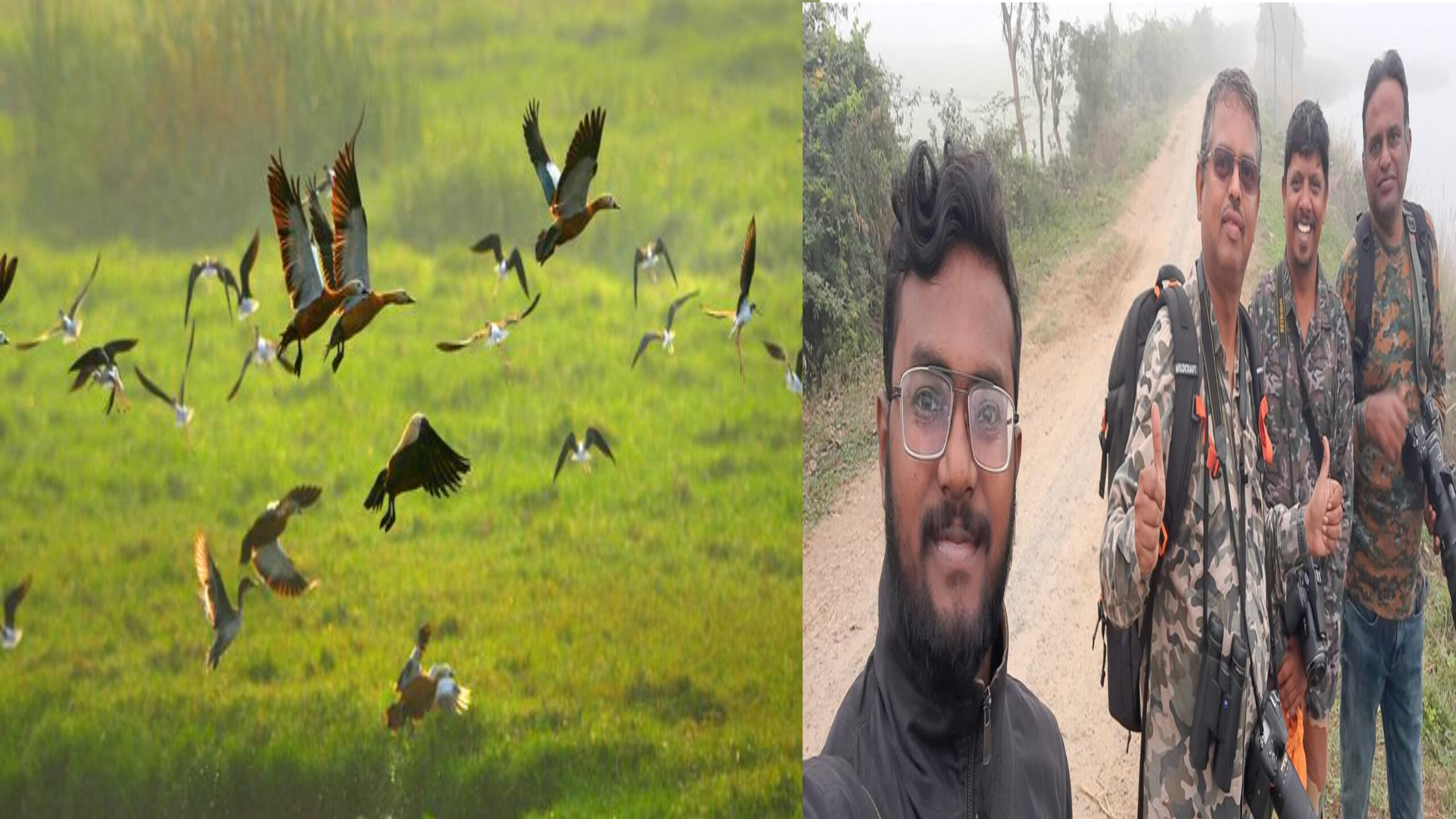In the serene landscapes of Visakhapatnam, a concerning trend has been observed by the local birdwatching community during the Asian Waterbird Census (AWC). The natural habitats, crucial for the survival and proliferation of various bird species, are facing unprecedented threats. Issues such as habitat destruction, poaching, unchecked construction activities, and the detrimental effects of landfills contaminating nearby water sources have come to the forefront as significant challenges.
A dedicated group comprising members from Wildlife Conservation Through Research and Education and the Vizag Birdwatchers Society, under the guidance of Vivek Rathod, A Yagnapathy, Vikram Penmetsa, and Janardhan Uppada, embarked on a mission to survey 22 wetlands across Visakhapatnam, Vizianagaram, and Srikakulam for this year’s AWC. Their early findings have painted a grim picture, particularly highlighting a marked decrease in bird populations in the Visakhapatnam wetlands.
Rathod pointed out that the arrival of migratory birds, which traditionally begins in November, was delayed until December this year, further noting a staggering 50% decrease in bird numbers this season. This decline follows a study conducted three years prior by WWF-India, aimed at assessing the status of the state’s wetlands to aid the Andhra Pradesh Forest Department. The survey at Meghadrigedda Reservoir noted the presence of diverse bird species, including river terns, little grebes, and purple herons, among others.
However, recent observations have indicated a significant reduction in bird sightings. This year, only 66 species were recorded at Meghadrigedda, with notable absences such as the red-crested pochard. Janardhan Uppada, reflecting on these observations, speculated that the installation of a floating solar power plant by the Greater Visakhapatnam Municipal Corporation could be a contributing factor to this disturbance.
Moreover, the situation at Podugupalem Lake, once a bustling winter migratory hotspot, has deteriorated. Compared to the previous year, the species count dropped from 83 to 53, with total individuals decreasing from 783 to 409. The decline has been attributed to rapid urbanization, poaching, and environmental degradation due to hill destruction at one lake end. Rathod, who has been regularly conducting bird-watching excursions in the area, lamented the loss of habitats and the displacement of species such as the Indian rock eagle owl and the rosy starling.
Despite these challenges, there have been moments of surprise and discovery. For instance, the pied avocet, a shorebird known for its distinctive upcurved bill, was spotted for the first time in recent years at Tagarapuvalasa pond. This sighting of a small flock suggests that the pond may have served as a stopover during the bird’s migratory journey.
However, the overall trend remains worrying, with declines observed even in species like the greater-painted snipes, known for their shyness and sensitivity to disturbance. Recent renovation activities, including the construction of walking tracks, have further impacted these birds’ natural habitats.
An interesting observation from the previous season was the breeding of great crested grebes at Boni Lake, a rare occurrence for the area. Unfortunately, this year saw a significant decrease in their numbers, with only one breeding pair recorded. The reasons behind this decline remain unclear, as the site does not present any apparent vulnerabilities.
Adjacent to the airport, a slight increase in bird species was recorded this year, rising from 49 to 57. However, this increase primarily consisted of common bird species, with a notable absence of waders. The transformation of a nearby canal into a drainage channel for local residents has significantly impacted the habitat, reducing both the diversity and number of birds.
These observations from the AWC underline the urgent need for concerted conservation efforts to address the myriad threats facing the region’s wetlands and their avian inhabitants. The decline in bird populations not only impacts ecological balance but also diminishes the area’s natural beauty and biodiversity, which has long been a draw for both locals and visitors. It is imperative that actions are taken to preserve these habitats, ensuring that they continue to serve as vital refuges for migratory and resident bird species alike.

